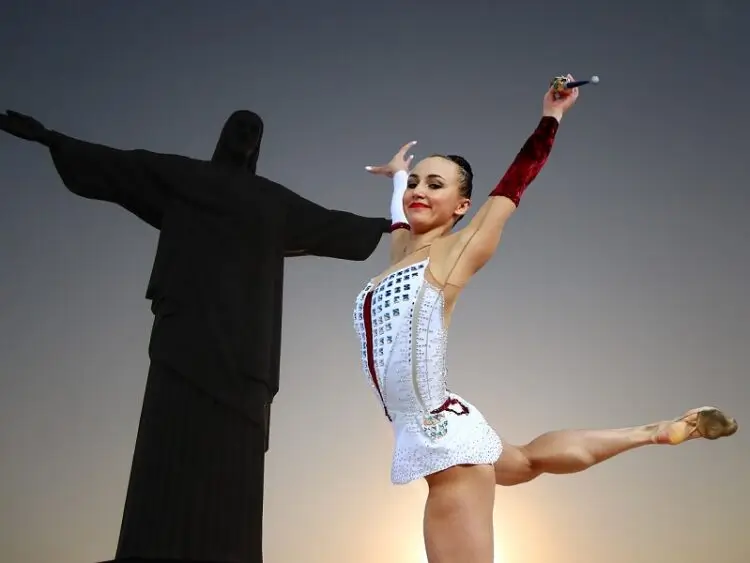If you’re like most people, you probably spent at least a few years in preschool. And if you’re like most people, you probably learned a lot of useful things during those years. Things that have come in handy throughout your life. Things like how to share and take turns, or how to get along with others. But did you know that some of the things you learned in preschool can also help you with rhythmic gymnastics? That’s right even if you never realized it before, those basic skills you acquired way back when can actually come in handy now. So don’t be surprised if some of the tips and advice below remind you of something your teacher taught you long ago.
Following Rhythmic Gymnastics instructions and taking direction
In a recent study, it was found that most preschoolers are used to taking instruction and the following direction. The research showed that the majority of children this age feel comfortable when someone tells them what to do and how to do it. While some may be more independent thinkers, the majority of kids in this age group prefer guidance from others. As parents, educators, and caregivers, it is important to keep this information in mind as we interact with young children. By understanding how they learn rhythmic gymnastics and what makes them comfortable, we can create an environment where they can thrive both socially and academically.
Help them learn how to balance their body and keep their head up
The physical demands of being a professional athlete are great, but the mental demands may be greater. Athletes must constantly focus on their movements and actions in order to perform at their best. In order to help them maintain this focus, coaches and trainers need to help athletes learn how to balance their bodies and keep their heads up. This will allow them to stay focused on the game and eliminate any unnecessary distractions. By doing so, athletes can perform at their peak level and win games.
Follow the teacher’s lead – they know what they’re doing
In gymnastics, as in most things in life, following the lead of a more experienced individual can be a valuable way to learn and improve your skills. This is especially true in gymnastics, where making small mistakes can have big consequences. So if you’re looking to improve your skills and impress your coach, follow the teacher’s lead during practice. By doing so, you’ll be able to focus on improving your technique rather than worrying about making mistakes. And who knows – with a little hard work and luck, you may just make it onto the next level team
Be patient – it takes time to learn new skills
When you’re learning something new, it’s natural to be impatient. You want to get good at it as quickly as possible. But the reality is that it takes time to learn new skills. Be patient, and don’t give up easily. Keep practicing, and you’ll start to see improvements over time. Just remember that everyone learns at a different pace, so don’t compare yourself to others. focus on your own progress, and you’ll reach your goals in no time.
Same as the case for Rhythmic Gymnastics Anyone who has attempted to learn a new skill knows that it can be frustrating especially when you don’t seem to be making any progress. But with patience and perseverance, you can achieve anything. This is true for learning gymnastics as well. Despite what you may see on TV, becoming a successful gymnast doesn’t happen overnight. It takes years of practice and hard work to develop the skills required. But if you’re willing to put in the time and effort, you can learn everything there is to know about gymnastics. So don’t get discouraged keep practicing and eventually you’ll reach your goals
The more you do, the better you’ll get
In order to be the best at something, you have to put in the work. The more time you spend improving your craft, the better you’ll become. This is especially true for professionals who want to stay ahead of their competition. Whether it’s practicing a skill or keeping up with industry trends, always strive to be learning and growing. You never know when that extra effort will pay off. Rhythmic gymnastics is a demanding sport that requires skill, technique, and practice. Many people think that because the routines are dance-like, they must be easy to perform. However, this is not the case. The slightest mistake can ruin a routine and cost you points. That’s why it’s so important to dedicate time to practice your moves. If you want to be successful in rhythmic gymnastics, you have to put in the work.
Listen to your body and rest when you need to
We all know the importance of sleep, but it’s especially crucial for athletes. When you’re constantly pushing your body to its limits, resting is essential for muscles to recover and rebuild. There are some tips on how to get the most out of your downtime.
- Plan out your downtime ahead of time to make the most of it
- Set realistic goals for yourself during your downtime
- Avoid multitasking during your downtime – focus on one task at a time
- Take breaks often and move around to keep your energy up
- Connect with friends and family during your downtime
- Use your downtime to relax and de-stress
It is a challenging and rewarding sport
Rhythmic gymnastics is a challenging and rewarding sport. It combines elegant athleticism with creative movement and music. Rhythmic gymnasts must have strength, flexibility, and grace. They must also be able to work well as part of a team. The sport is growing in popularity, and there are opportunities for talented athletes all over the world

